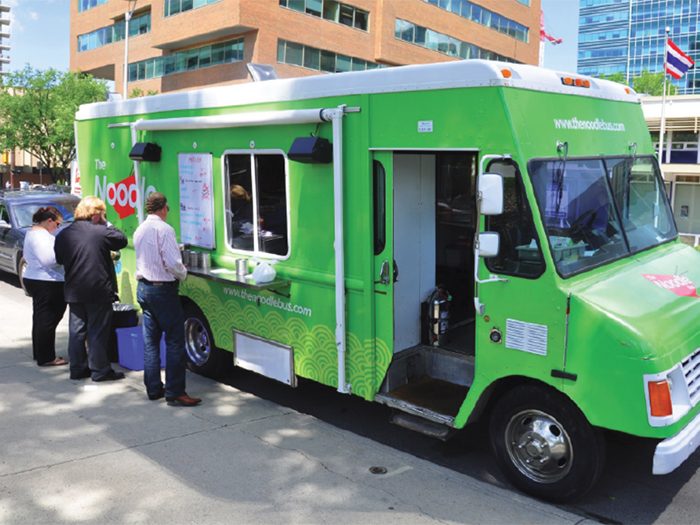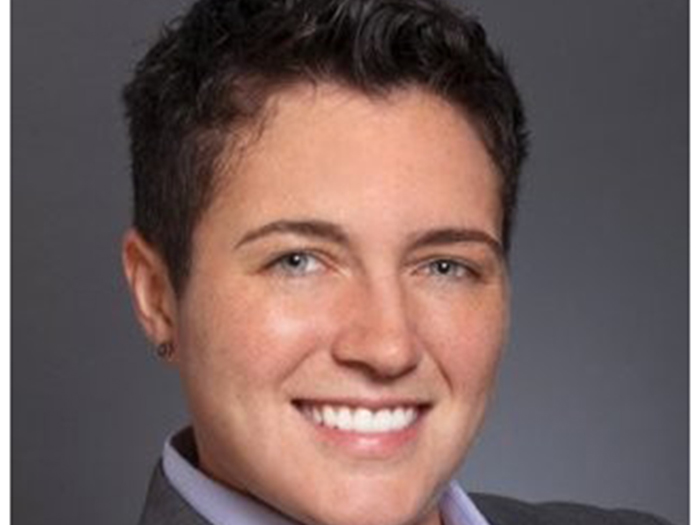Program Business
Serving Up Risk

From fast food chains with nationwide delivery programs to neighborhood restaurants using third parties, restaurant delivery is now a multibillion-dollar business. And from the parking lots of office buildings to chic events, more restaurants are using food trucks to bring their kitchens into the community.
Making dining mobile is a viable means to boost revenues, but insurance experts and risk managers say restaurants could be opening new doors of exposure. Those who want to implement deliveries need to ensure they’re properly validating employees or third-party drivers, and obtaining the right coverages.
Restaurant Deliveries on the Rise
The business of delivering food is booming. UberEATS now operates in 65 U.S. cities, and chains like Panera Bread, Outback, Starbucks and Applebee’s have either started or intend to introduce delivery programs. McDonald’s recently announced a pilot delivery program in Florida, and many independent restaurants have been inspired to put their food on the road.
Tom Metzner, vice president and senior loss control consultant with Lockton, said while it can be tempting for independent restaurants to establish a pilot delivery program, they could be opening new areas of risk. Metzner said many are partly absorbing the liability and not doing due diligence by thoroughly checking backgrounds, driving records and insurance coverage.
“If there’s an accident and the party is able to determine the driver was operating in the scope of business and had a poor driving record, courts have made sizeable awards under the doctrine of negligent entrustment,” said Metzner.
In 2013, a Texas jury delivered a $32 million verdict against Domino’s after an accident with a delivery driver killed a 65-year-old woman and left her 70-year-old husband with brain injuries. In April 2016, a jury in Georgia awarded $11 million to an injured woman from a crash with a Papa John’s delivery vehicle.
Restaurants can also potentially be held liable for injury to their drivers. The U.S. Bureau of Labor Statistics reports that pizza delivery driver is one of the most dangerous occupations in the U.S. due to accidents and robberies. Another common risk, which should be covered under most businessowners’ policies, is the potential for sickness due to improper food handling.
“It’s called time-temperature abuse. If [a driver] doesn’t maintain the proper temperatures, food can become contaminated and that creates the potential for foodborne illnesses,” said Metzner.
Third party services growing yet could face new regulations
AmWINS Program Underwriters recently announced a partnership with General Star Management Co. to offer a restaurant delivery program for hired and non-owned auto liability risks for those with 20 or fewer locations.
Some restaurants are using third parties for deliveries. Big chains and independent restaurants alike are looking to UberEATS and GrubHub to outsource their deliveries. UberEATS is currently available in more than 60 cities and charges a flat fee of $4.99 for all orders. The company’s agreement requires that “each party” maintain commercial general liability coverage of $1 million single limit per occurrence and $2 million aggregate, and workers’ compensation insurance where required by law.
Yet some attorneys say there could be court challenges in the coming years regarding exclusions, coverage and limitations of liability.
While Uber’s general commercial insurance applies when the driver is in the process of picking up or delivering food, there are questions about whether it applies when the app is open and they are “on the clock” but not specifically delivering food.
The growing restaurant delivery industry could also face regulatory challenges in the near future. In 2016, the Texas Restaurant Association said regulations may be necessary to address things like food safety, liability for bad delivery, and intellectual property violations. A bill being floated in California (AB-1461), addresses food delivery enterprises and could potentially require drivers to obtain a food handler card.
If [a driver] doesn’t maintain the proper temperatures, food can become contaminated and that creates the potential for foodborne illnesses.” —Tom Metzner, vice president, senior loss control consultant, Lockton
Regardless, AmWINS’ Managing Director Keith George said the issue is coming to the forefront as more restaurants offer delivery services.
He said both restaurants and their contract drivers should have their own insurance policies in place.
In the case of UberEATS, where a driver may be delivering for multiple restaurants in the area at the same time, determination of liability in court could be foggy.
“Could the restaurant owner be drawn into a claim if the delivery driver was happening to deliver their product at that particular time [during] the accident? Sure, I think a creative attorney could argue that,” said George.
Carrying Complex Risks
More restaurants are also using food trucks as a means to bring their culinary creations to events and high traffic areas. “Mobile Cuisine” magazine reports that in 2015, 4,130 food trucks pulled in $1.2 billion in revenues nationwide.
Food trucks house complex risks because they add all the components of a restaurant to a moving vehicle that often operates on someone else’s property. Denny Christner, consultant and sales manager at Brown & Brown Insurance, operates the company’s affiliate Insure My Food Truck.
Christner said his company started writing these policies specifically for food trucks in the Bay Area in 2012 and has since gone nationwide; with more than 900 accounts.
“I like to use the analogy of, let’s say, a 6-ton truck carrying flammable propane to cook and to get around, and oils for their cooking. It’s definitely a dangerous scenario,” said Christner.
Because food trucks often operate on property that they don’t own, personal injury liability could come down to how an incident occurred and whether there was negligence on the part of the food truck operator.
While a tripping hazard could be the responsibility of the property owner, leaking oil or improper placement of the food truck could change the equation. Christner said most venues are growing aware of the issues and are requiring food trucks to carry their own general liability.
Insure My Food Truck offers packages that can include commercial auto, general liability, property, loss of business income and workers’ compensation.
“It’s often a mess when they get to us and we have to clean it up and get them the right coverage. Sometimes it’s more expensive and a hard pill to swallow but most savvy business owners understand that,” said Christner.
As mobile food solutions increase, more insurers are entering what has traditionally been considered a high-risk market. George said until recently there have been limited providers in the field due to high turnover of delivery employees; forcing insurers to frequently change their insured parties.
“The bottom line is that it tends to be more of a severity-driven risk versus a frequency risk,” said George. &












